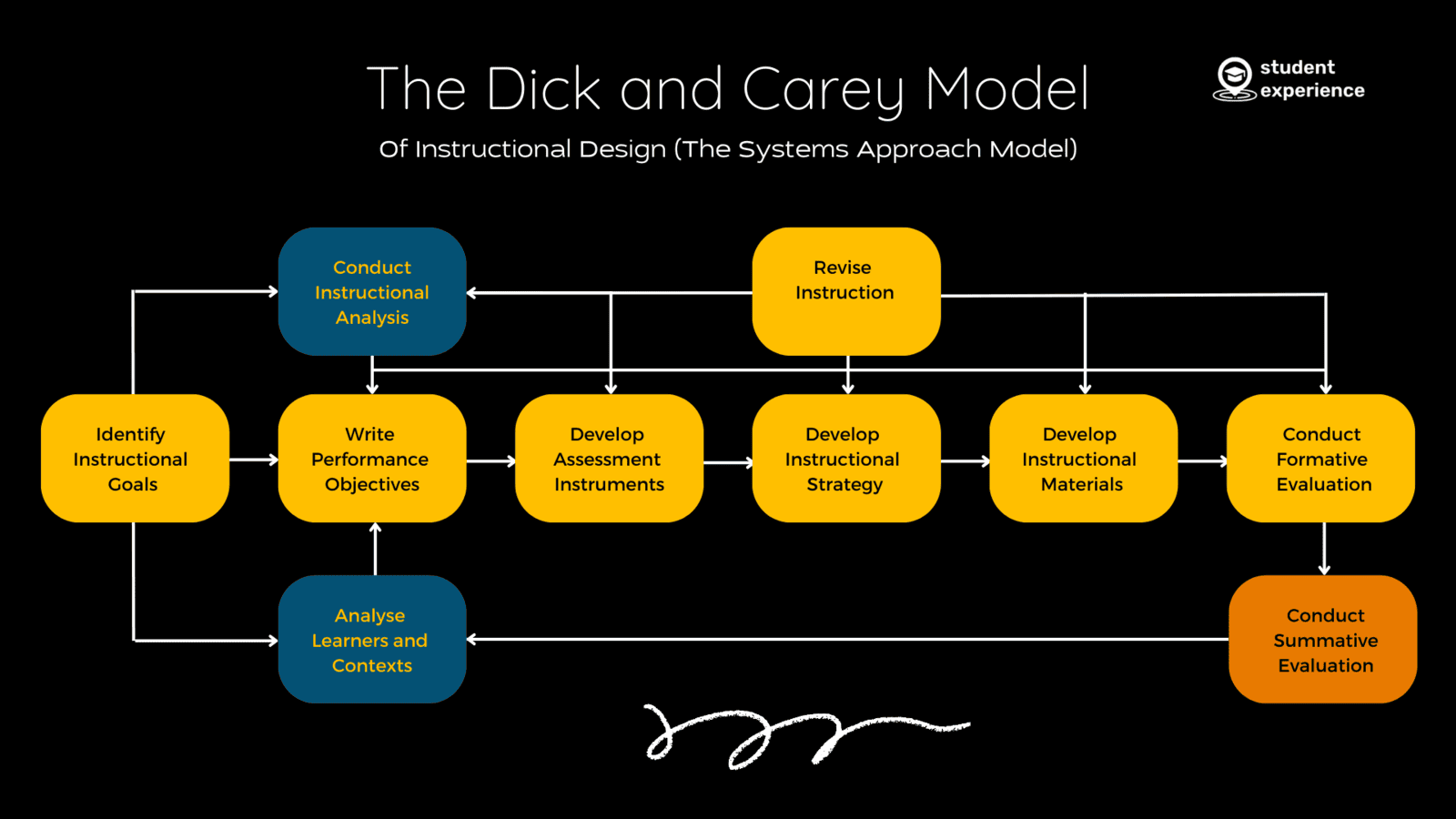The Dick and Carey Model is an instructional design model developed by Walter Dick and Lou Carey in the late 1970s. It is based on the principles of behaviorism and systematic design, drawing on earlier instructional design methodologies and theories. This model was created to provide educators and instructional designers with a structured framework for designing and developing effective instructional materials.
The Dick and Carey Model is characterised by a systematic and step-by-step approach to instructional design. It typically includes the following phases:
Identify Instructional Goals: Begin by identifying clear and measurable learning objectives. What do you want learners to achieve by the end of the instruction?
Conduct Instructional Analysis: Analyse the learners and the learning context. Identify prerequisites, learner characteristics, and any constraints or limitations.
Analyse Learners and Context: Understand the characteristics and needs of the learners. Consider their prior knowledge, skills, and motivations. Assess the learning environment and any constraints.
Write Performance Objectives: Define specific, measurable, and observable learning outcomes. Objectives should specify what learners will be able to do after completing the instruction.
Develop Assessment Instruments: Create assessments that align with the performance objectives. These assessments can include quizzes, tests, projects, or other methods to measure learners' achievement.
Develop Instructional Strategy: Design the sequence of instruction, including content organization, instructional strategies, and multimedia elements.
Develop and Select Instructional Materials: Create or select appropriate instructional materials and resources. This can include textbooks, digital content, multimedia, and more.
Design and Conduct Formative Evaluation: Test the instruction with a small group of learners to gather feedback and identify areas for improvement.
Revise Instruction: Based on the formative evaluation feedback, revise the instruction and materials to improve effectiveness.
Design and Conduct Summative Evaluation: Conduct a final evaluation to assess the overall effectiveness of the instruction and whether it met the defined learning objectives.
Applications
The Dick and Carey Model is versatile and can be applied to a wide range of instructional design projects, from traditional classroom instruction to online courses, corporate training, and more. Its systematic approach makes it particularly useful for designing complex and high-stakes instruction, such as professional development or certification programs.
Tools and Technologies
The implementation of the Dick and Carey Model is often supported by a variety of tools and technologies. This can include:
- Learning Management Systems (LMS): To deliver and manage instructional content.
- Authoring Tools: To create multimedia content, assessments, and interactive elements.
- Content Management Systems (CMS): For organising and storing instructional materials.
- Assessment and Feedback Tools: To create and administer quizzes, surveys, and assignments.
- Virtual Learning Environments: For online and distance learning.
Strengths
Systematic Approach: The model provides a structured and systematic approach to instructional design, ensuring a logical progression from goal identification to evaluation.
Focus on Objectives: Emphasis on clear, measurable learning objectives helps in aligning instruction with desired outcomes.
Adaptability: The model is adaptable and can be applied to various educational settings and content types.
Formative Evaluation: The incorporation of formative evaluation allows for ongoing improvement and refinement of instruction.
Weaknesses
Complexity: The Dick and Carey Model can be time-consuming and resource-intensive due to its detailed phases and evaluations.
Rigidity: Some critics argue that the model's rigid structure may not be suitable for all instructional contexts, especially those that require more flexible and learner-centered approaches.
Resource-Intensive: The extensive analysis and evaluation phases can be resource-intensive, making it less feasible for smaller-scale projects.
Assessment Focus: Some argue that the model places too much emphasis on assessment and may not fully consider individual learning styles and preferences.




